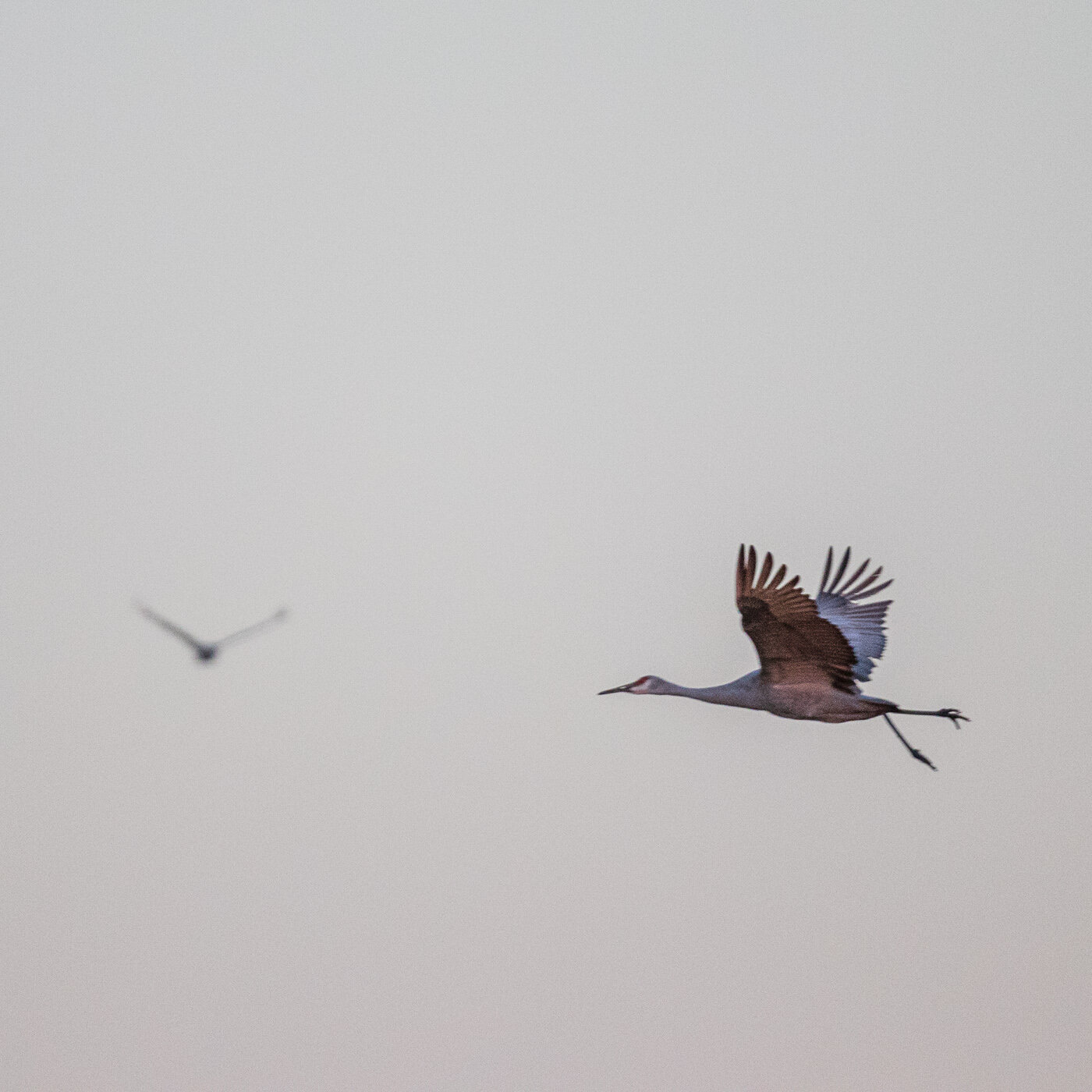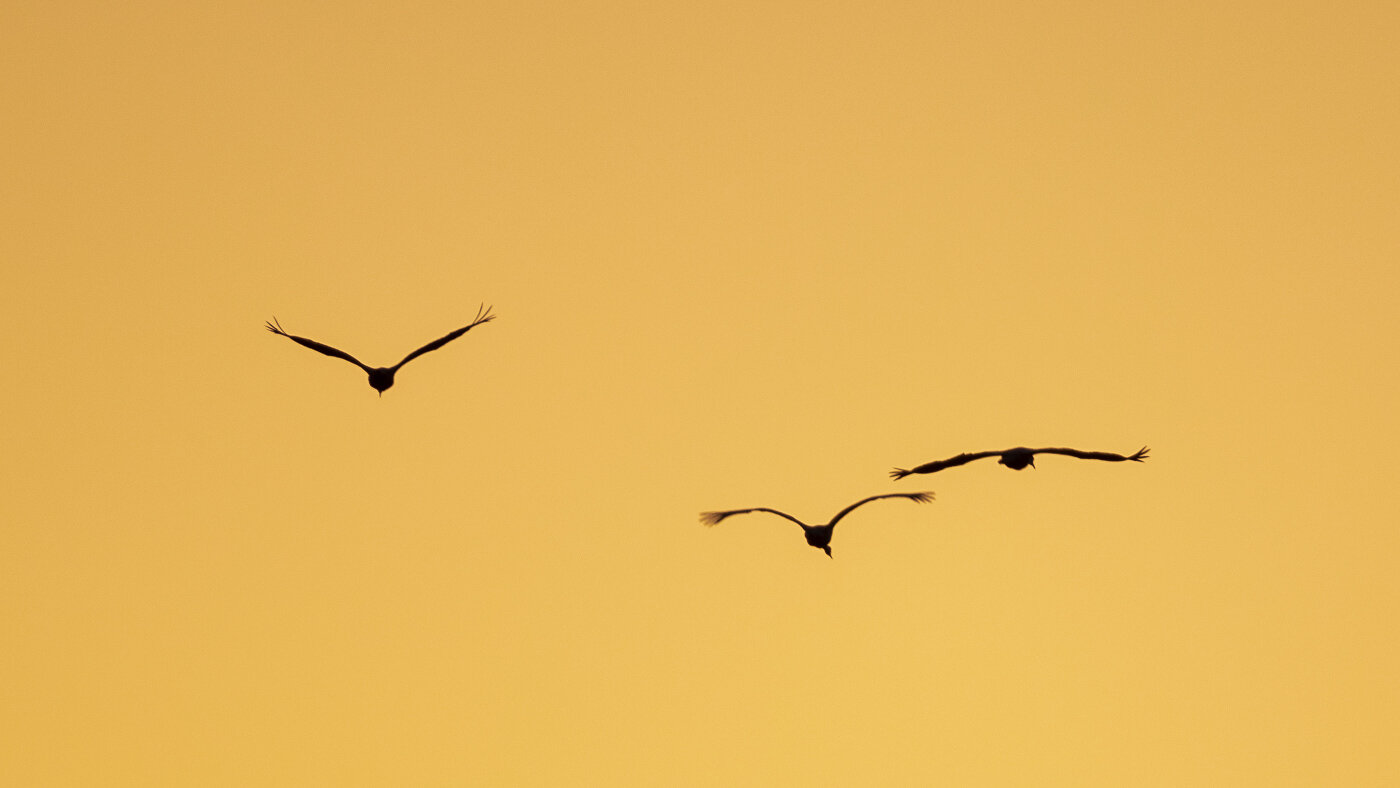I’m continually amazed and inspired when I’m in my backyard and hear the call of sandhill cranes, and look up and far above are lines of the birds migrating. Their ancient call is so loud that even when they are small dots thousands of feet up their sound travels to the ground. They summer in Wisconsin, Minnesota, and Canada, and then head to Florida and Georgia for the winter. Thousands stop in northwest Indiana for a few weeks to rest and eat the grain in the fields before moving on.
They spend the night in water to keep away from coyotes and other predators, and then take off at dawn to head to the fields. Jasper-Pulaski Fish & Wildlife Area has some expansive protected land for them. The birds often assemble in the large field in front of a viewing platform, before scattering to the fields. Unfortunately, when I visited Friday, they just headed out without the intermediate stop. Still there was some nice changing color in the sky.
Looking east, they’d silhouette in the rising sun.
The clear sky allowed their feathers to be illuminated by the rising sun.
The cranes mate for life, and their chicks stay with them for over a year. You’ll often notice that they’ll fly together as a pair or a family group of three or four.
If you’re below the migration route, listen for the call and look up. Or if you’re up for a sunrise or sunset trip, head over to Jasper-Pulaski and watch a natural wonder.













